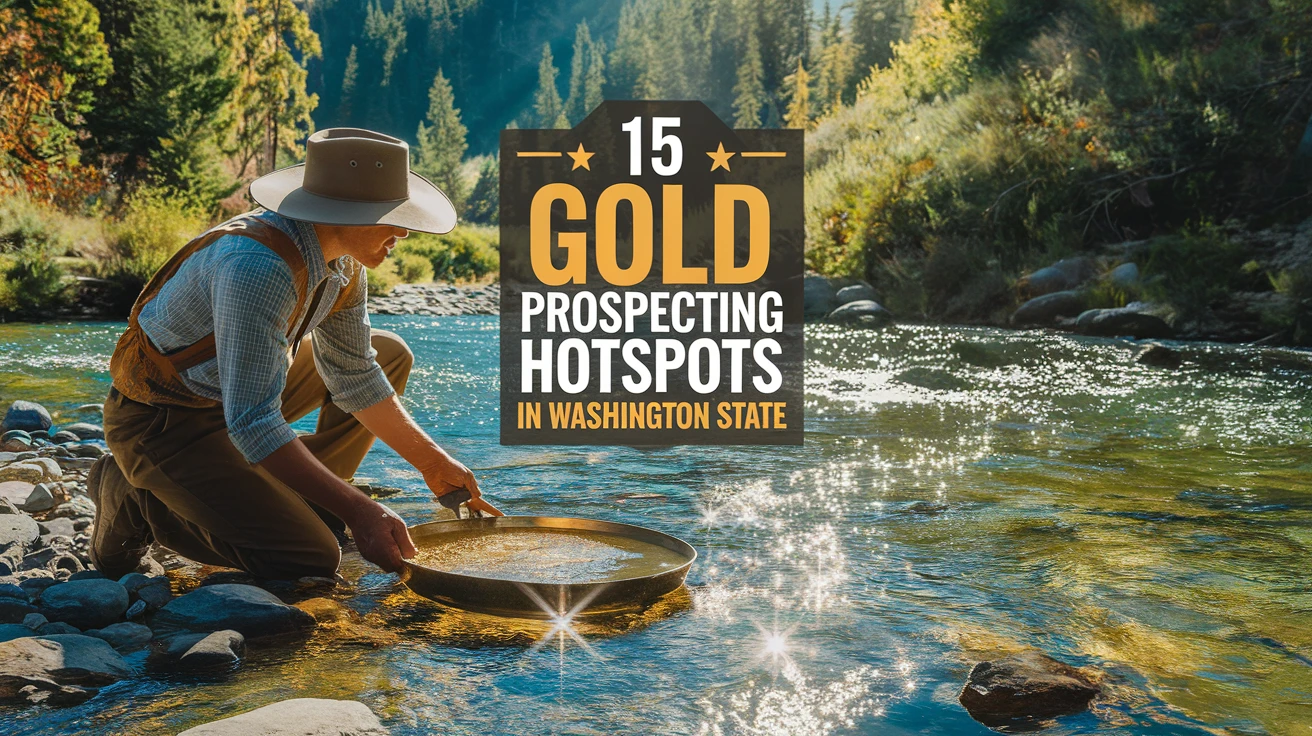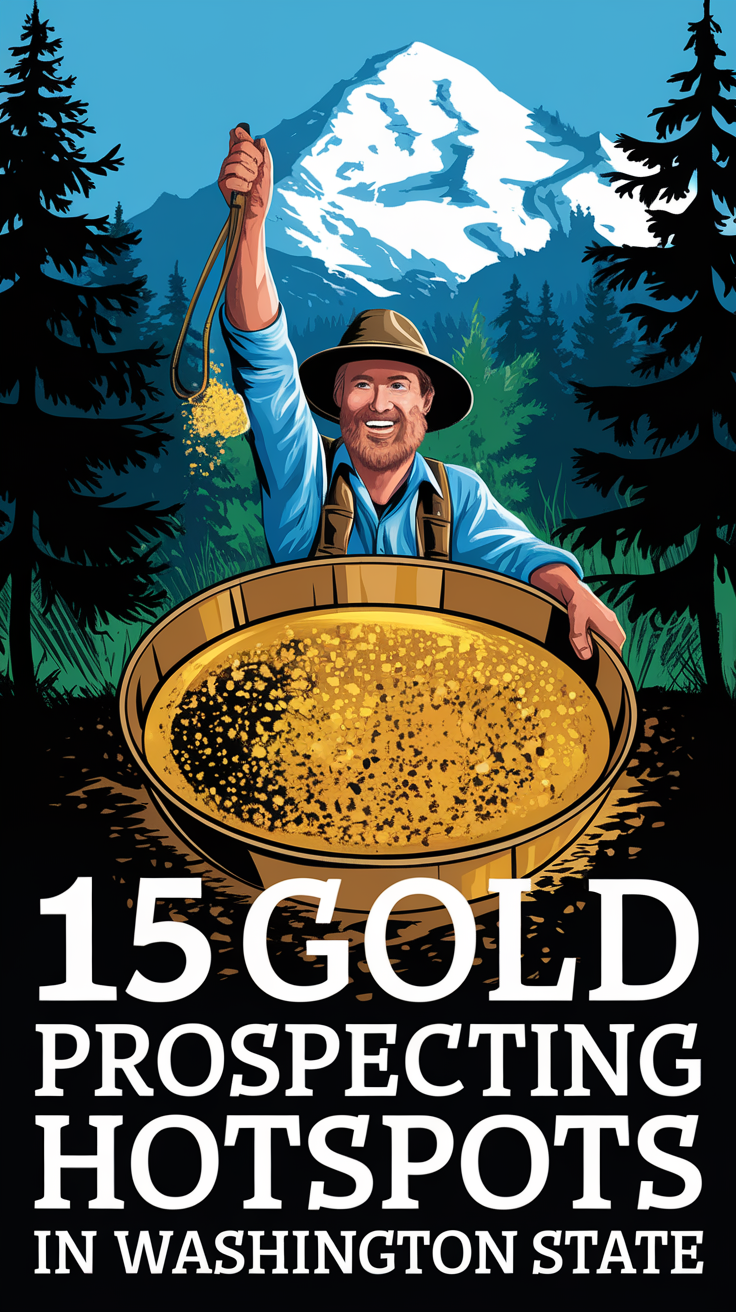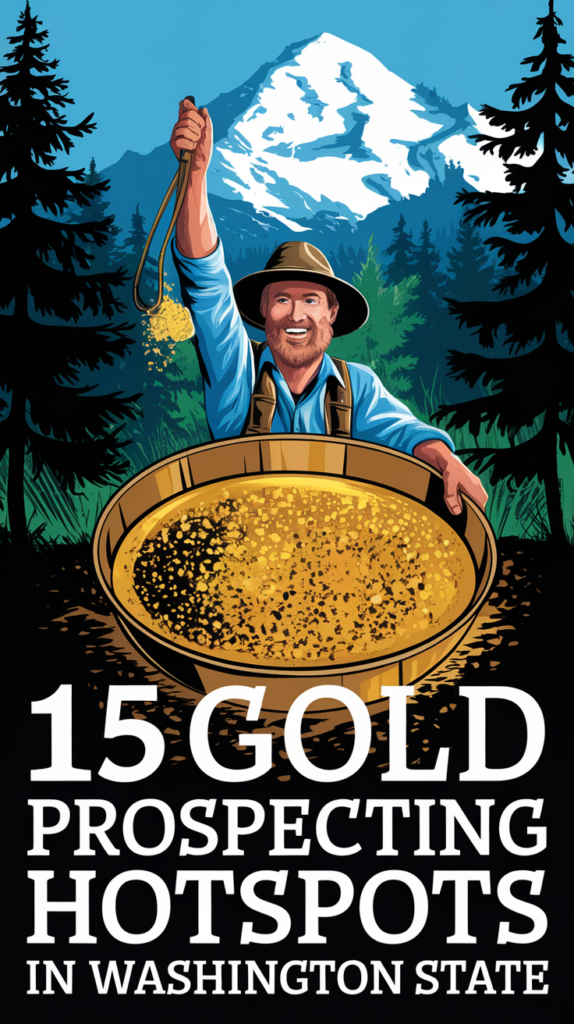
Washington State’s rich gold mining history continues to attract prospectors from all corners of the country. From the cascading waters of the Cascade Mountains to the rushing streams of the Olympic Peninsula, gold seekers still find their fortune in the Evergreen State’s waterways. Whether you’re a seasoned prospector or just beginning your gold panning adventure, Washington offers numerous locations where that telltale glitter might catch your eye. Let’s explore 15 of the most promising spots where you can try your luck at striking gold.
The Gold Rush Legacy of Washington State
Gold was first discovered in Washington Territory in 1853, sparking several minor gold rushes that brought prospectors from across the continent. Unlike the California Gold Rush, Washington’s gold discovery was more gradual, leading to sustained mining operations that continued well into the 20th century. Today, recreational prospectors can still find placer gold in many of these historical locations.
Essential Equipment for Gold Panning
Before heading out to any of these locations, ensure you have the proper equipment:
| Basic Equipment | Purpose | Estimated Cost |
|---|---|---|
| Gold Pan | Primary tool for separating gold from sediment | $10-20 |
| Classifier | Screens larger materials | $15-25 |
| Sluice Box | Processes larger amounts of material | $50-100 |
| Snuffer Bottle | Collects fine gold | $5-10 |
Northern Washington Gold Hotspots
1. Ruby Creek
Located in Whatcom County, Ruby Creek has been a reliable source of placer gold since the 1880s. Access is via Forest Service Road 39, and the best spots are found near the confluence with Crater Creek.
2. Cascade Creek
This tributary of the Skagit River offers excellent opportunities for gold panning, especially after spring runoff. Look for black sand deposits, which often indicate the presence of gold.
3. Thunder Creek
Known for its fine gold deposits, Thunder Creek in the North Cascades requires a short hike but rewards prospectors with relative solitude and consistent finds.
4. Nooksack River
The North Fork of the Nooksack River contains numerous gold-bearing gravel bars. Focus on areas downstream from glacial deposits where natural sorting has occurred.
5. Sultan River
Easy access and historical success make the Sultan River a favorite among weekend prospectors. The best areas are found near the old mining claims east of Sultan.
Seasonal Prospecting Guide
| Season | Conditions | Recommended Locations |
|---|---|---|
| Spring | High water, fresh deposits | Higher elevation creeks |
| Summer | Ideal conditions | All locations accessible |
| Fall | Moderate water levels | River beds and gravel bars |
| Winter | Limited access | Lower elevation rivers |
Central Washington Gold Hotspots
6. Peshastin Creek
Historical mining operations left behind workable deposits. Focus on areas near the old Peshastin Mining District where fine gold is still commonly found.
7. Swauk Creek
Famous for its crystalline gold specimens, Swauk Creek continues to produce both placer and lode gold. The area around Liberty is particularly promising.
8. Negro Creek
Despite its controversial name, this creek near Leavenworth has been a consistent producer of placer gold since the 1800s.
9. Wenatchee River
The stretch between Leavenworth and Cashmere offers multiple access points and reliable gold deposits, especially after spring floods.
10. Blewett Pass Area
The historic Blewett Mining District still yields gold. Check the numerous small creeks and drainage areas around the pass.
Safety Guidelines
– Always inform someone of your prospecting location
– Carry basic first aid supplies
– Bring more water than you think you’ll need
– Wear appropriate footwear for slippery rocks
– Check weather forecasts before heading out
– Avoid working alone in remote areas
Southern Washington Gold Hotspots
11. Lewis River
Multiple access points and historical success make the Lewis River a popular choice. Focus on areas with natural barriers where gold might concentrate.
12. East Fork Lewis River
Known for producing both fine gold and occasional nuggets, the East Fork offers excellent opportunities near Moulton Falls.
13. Washougal River
Accessible year-round, the Washougal River’s gold-bearing gravels continue to reward careful prospectors.
14. Wind River
Though less known for gold, the Wind River holds secrets in its gravel bars, particularly near Carson.
15. White Salmon River
The lower sections of this river contain placer deposits worth investigating, especially after high water events.
Legal Requirements
– Washington State Gold and Fish Pamphlet required
– Check land ownership status
– Respect claim markers and private property
– Follow environmental regulations
– Obtain necessary permits for motorized equipment
Conclusion
Washington State’s gold prospecting opportunities remain abundant for those willing to put in the time and effort. While you might not strike it rich, the combination of outdoor recreation, historical connection, and the thrill of finding gold makes this hobby deeply rewarding. Remember to always follow local regulations, practice responsible prospecting, and preserve these locations for future generations of gold seekers.
Key Takeaways
- Washington offers diverse gold prospecting opportunities across the state
- Proper equipment and permits are essential for successful prospecting
- Seasonal conditions greatly affect accessibility and success rates
- Research and preparation are key to a successful prospecting trip
- Always follow local regulations and safety guidelines
Frequently Asked Questions
Do I need a permit to pan for gold in Washington?
Yes, you need to obtain a Gold and Fish Pamphlet, which serves as your permit for basic prospecting activities.
What’s the best time of year for gold panning in Washington?
Late summer and early fall offer the best conditions with lower water levels and easier access to gravel bars.
Can I keep the gold I find?
Yes, you can keep any gold you find while following proper regulations and working on public lands or claims you have permission to prospect.
What’s the most common type of gold found in Washington?
Most gold found in Washington is fine placer gold, though occasional nuggets are discovered.
Are there any restricted areas for gold panning?
Yes, many areas are restricted including private property, national parks, and active mining claims without permission.
What’s the minimum equipment needed to start gold panning?
A gold pan, classifier, and snuffer bottle are the basic essentials for beginning prospectors.
How much gold can I expect to find in a day?
Yields vary greatly, but most recreational prospectors find from a few flakes to a gram or more per day.
Is it legal to use a sluice box in Washington?
Yes, but there are specific regulations and seasonal restrictions detailed in the Gold and Fish Pamphlet.
What should I look for when choosing a prospecting location?
Look for natural barriers in waterways, black sand deposits, and areas where water velocity changes.
Do I need special permission to prospect on Forest Service land?
Basic panning on Forest Service land typically only requires the Gold and Fish Pamphlet, but motorized equipment may need additional permits.


